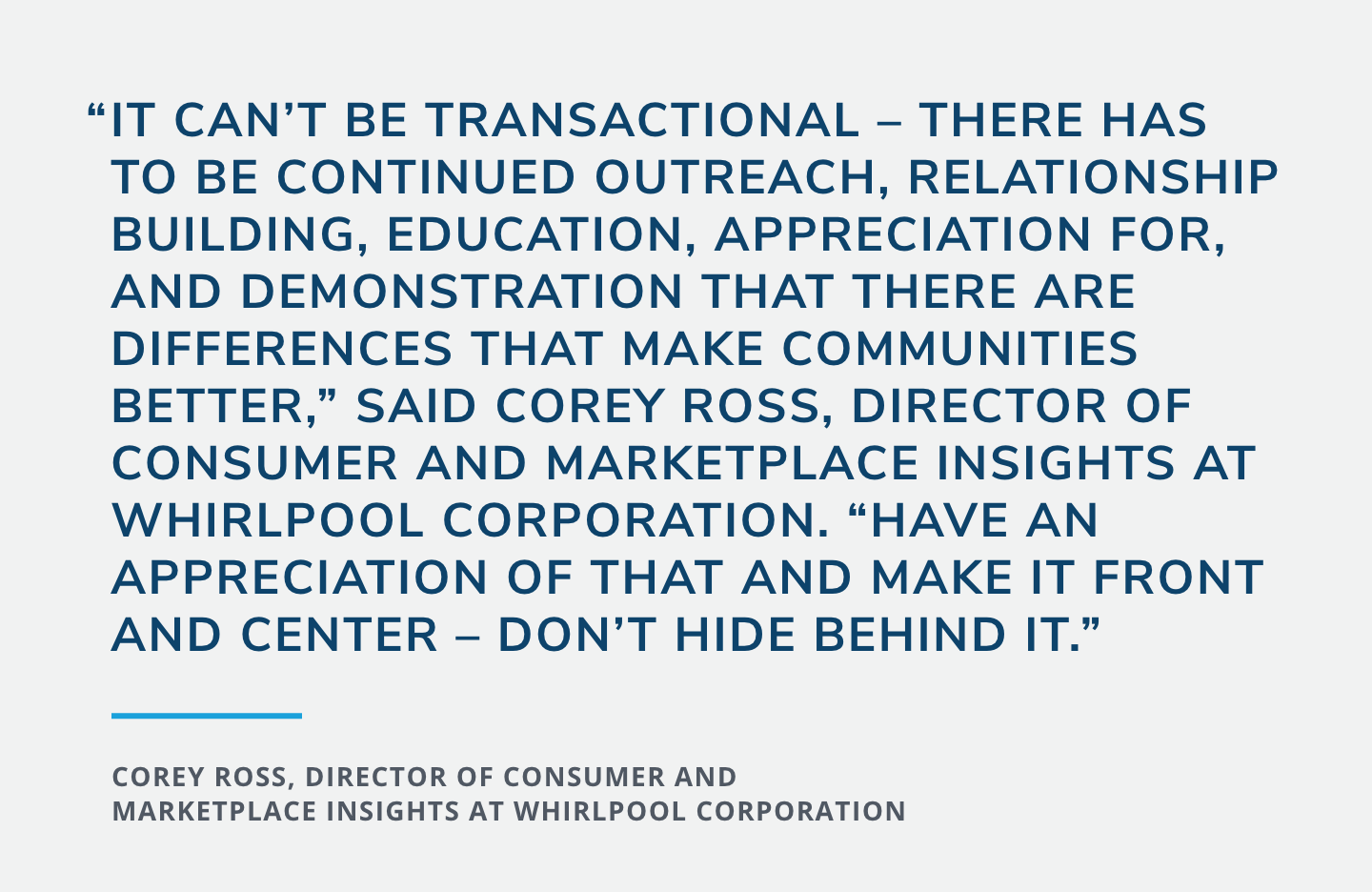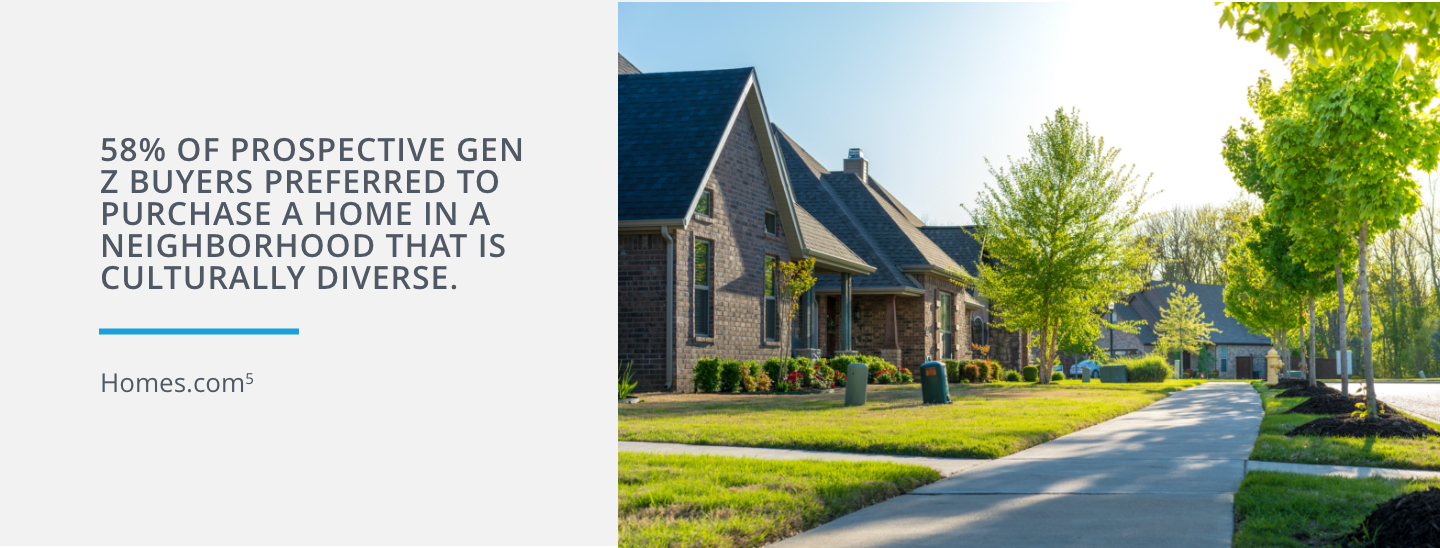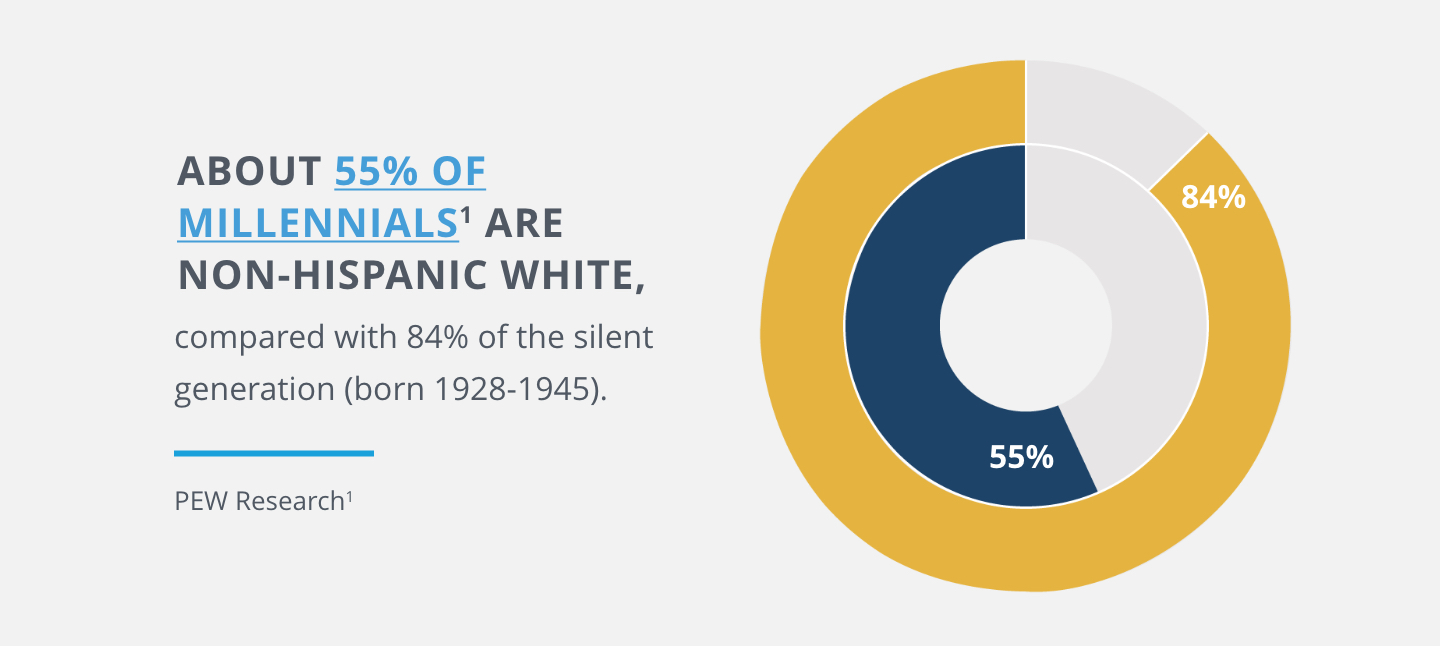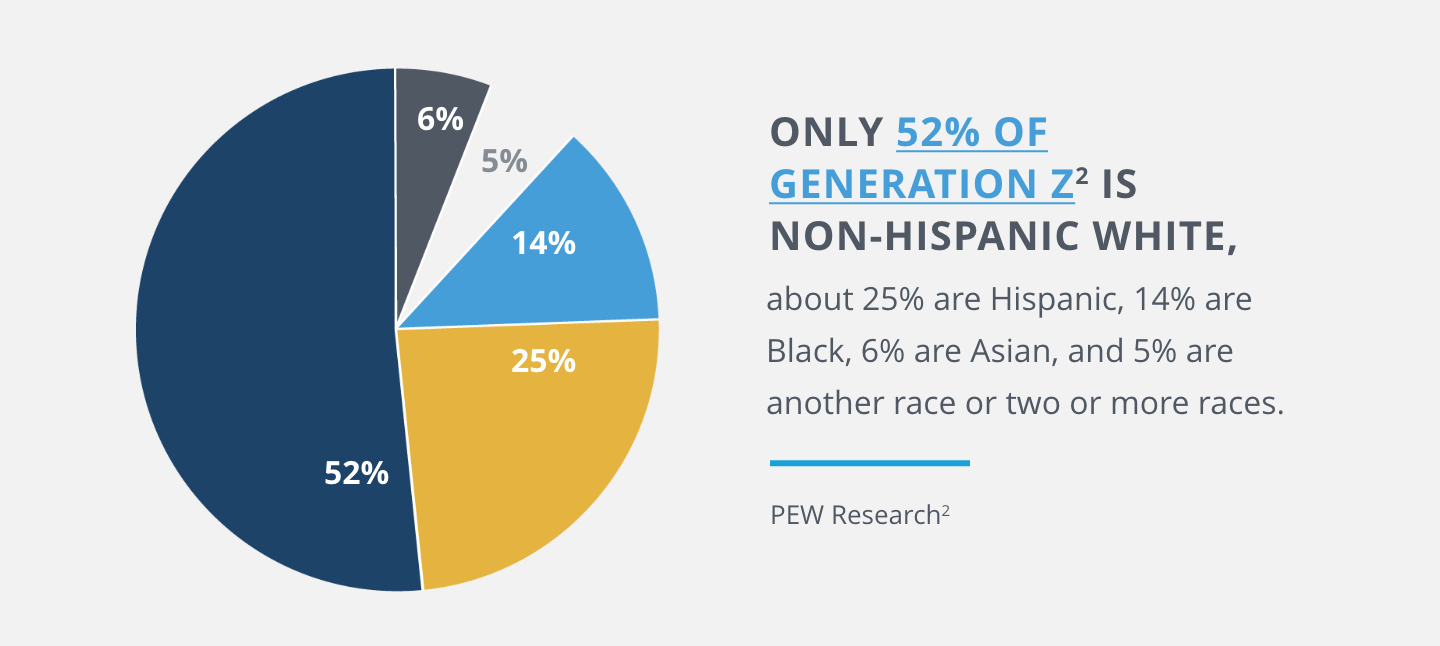REASOn #2
More Diversity
The rise of racial and ethnic diversity has been one of the most dramatic changes in American society in the last century, and it's embodied in the millennial and Gen Z generations.
The rise of racial and ethnic diversity has been one of the most dramatic changes in American society in the last century, and it's embodied in the millennial and Gen Z generations.
The rise of racial and ethnic diversity has been one of the most dramatic changes in American society in the last century, and it's embodied in the millennial and Gen Z generations. This means a much more diverse group of new households and homeowners are expected in the next couple of decades.
- About 55% of millennials1 are non-Hispanic white, compared with 84% of the silent generation (born 1928-1945).
- Only 52% of Generation Z2 is non-Hispanic white, about 25% are Hispanic, 14% are Black, 6% are Asian, and 5% are another race or two or more races.
A report by the Urban Institute estimates of the almost 7 million net new homeowner households3 between 2020 and 2040:
- Hispanic homeowners will increase by 4.8 million
- Homeowners of other races (primarily Asian) will go up by 2.7 million
- Black homeowners will climb by 1.2 million
- White homeowners will decrease by 1.8 million
The building industry will need to focus its efforts not just on the design of new homes, but on the marketing of neighborhoods in order to reflect the diversity of these younger buyers.

Some builders are making sure their homes reflect the cultural sensibilities of potential buyers by including features such as prayer rooms; taking into consideration design systems such as vastu shastra and feng shui; and providing multigenerational-focused amenities, including suites and multiple gathering areas.
Multi-generational homes were bought by almost a quarter of Asian-American homeowners and just under 20% of Hispanic homeowners, which is higher than other groups, according to the National Association of Realtors' (NAR) Snapshot of Race & Home Buying in America report4.
The report showed other important differences as well:
- Prospective minority homeowners often have a tougher time obtaining a home than white homeowners - for example, the homeownership rate for Black Americans is 42%, which is almost 30% less than the rate for white Americans.
- It's more than twice as likely that Black households will have student loan debt vs. white households.
- Black and Hispanic Americans were much more likely than white or Asian Americans to use funds from their pension or 401k to buy a home.
The survey also reports that about 7 in 10 white Americans bought a home in a neighborhood where the majority of the residents were of the same race, while only about a quarter of Hispanic, Black, and Asian Americans did the same.

This is likely to change with Gen Z. One survey5 showed that 58% of prospective Gen Z buyers preferred to purchase a home in a neighborhood that is culturally diverse, and only 12% wanted to live in an area that is homogeneous.
Diversity goes beyond making sure you have a home design and amenities that take into account cultural differences. It's also vital to consider how you can provide a variety of experiences - both in the neighborhood and nearby - for homeowners.

Whirlpool Corporation is committed to meaningful action to cultivate an even stronger, more inclusive culture and diverse organization. In 2020 and 2021, for instance, the company took strides in promoting diversity and inclusion:
-
- Formed an Executive Inclusion & Diversity Council composed of senior leaders that is focused on ensuring we have the right strategy, structure and resources to deliver on our inclusion and diversity goals.
-
- Learn more about Whirlpool Corporation's PLEDGE to Equality and Fairness for our Black Colleagues
-
- Chairman and CEO Marc Bitzer became a founding member of OneTen, a coalition of leading executives with the mission to train, hire and advance one million Black Americans over the next 10 years into family-sustaining jobs with opportunities for advancement.
-
- Named to the 2020 Diversity Best Practices Inclusion Index, highlighting Whirlpool Corporation's ongoing commitment to engaging in effective practices of diversity and inclusion.
While Whirlpool Corporation's actions focus on its "four walls" and its local communities, the company hopes that its actions will have a ripple effect on society at large. Additional details can be found in Whirlpool Corporation's 2020 Sustainability Report.
SOURCES


